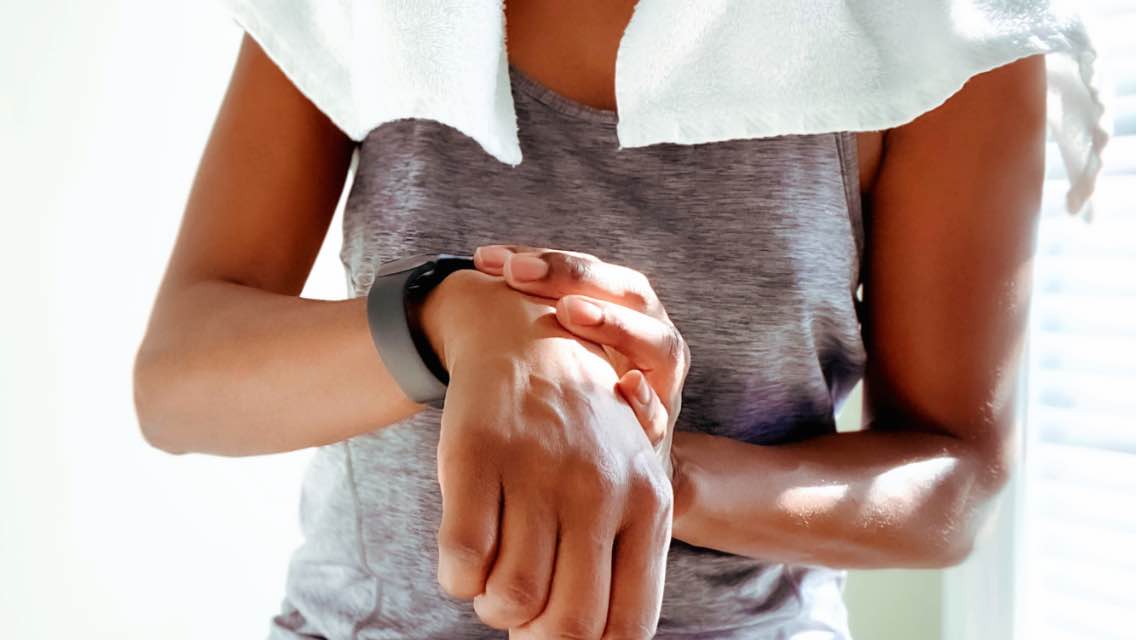Serious athletes, stay-at-home parents, busy executives, and most mortals succumb to the effects of under-recovery from time to time.
Under-recovery is slightly different than overtraining. Most non-athletes would have a hard time achieving “textbook” overtraining syndrome due to the high training volumes related to overtraining.
Though under-recovery may be related to training volume, it is more often a result of poor lifestyle and nutrition choices, which negate the effects of an intense training program. Not surprisingly, the symptoms are very similar to overtraining and stem from an excessive level of stress compared to the ability to recover from it.
If you can relate to any of the signs below, make a point of addressing your recovery plan. After all, the value of a workout isn’t just what you do during your training: The real benefits come from recovering afterward, as your body gets stronger, faster, leaner, and healthier.
- 1. Workouts seem more like work than training.
- 2. You’re weaker from week to week with the same movements.
- 3. You’re sore all the time.
- 4. Your significant other or friends keep asking what’s wrong with you.
- 5. You toss and turn at night.
- 6. Your heart rate is higher or lower than normal.
- 7. Your heart rate variability is less variable.
1. Workouts seem more like work than training.
I’m terrible at listening to my body. I have a “push through it” mentality. Once in a while, it works. But it also works against me when it comes to workouts.
If we listen to our bodies, they usually let us know when something isn’t right. If the excitement is gone from your workouts, it could be a sign that you’re not recovering from them. Don’t use that as an excuse to stop exercising.
Instead, you may need to rethink your training program, change it up, or address what’s going on between your training sessions. In my experience, most people keep doing the same workouts week after week, until they get injured or bored. Then they stop for a while, gain some fat, lose some muscle, and then start up again with the same program.
Periodization is the most important part of seeing continued improvements with workout programs. It’s also important for avoiding boredom.
It involves looking at each year and putting together six- to 12-week cycles of training. It’s a core principal in personal-training program design.
Exercises, sets, reps, body-part splits, rest periods, and modifying the combination of strength and cardiovascular training all need to be part of an annual plan.
If workouts feel more like work, connect with a fitness professional to work on a complete, long-term program. If you’re a Life Time member, check out the Life Time Virtual Training options as well.
2. You’re weaker from week to week with the same movements.
Do you want to know a secret that is almost guaranteed to help get you better results from your training than 99 percent of people who exercise? Write down every workout.
I’m always amazed by how few people write down their workouts. The only way to get stronger is to push yourself beyond what you’ve done in the past. The only way to remember the weight, sets, and reps you did the previous workout is to write them down.
When you track your workouts, you can look back at what you did the previous session and know what you need to do to progress, whether that’s add increase duration or intensity.
Most people will see continued improvements for six to 12 weeks and then plateau or regress. If they regress sooner, it may be that they they’re not recovering between workouts. If the plateau occurs in the six- to 12-week timeframe, it may be time to change up the training program.
If you don’t write down your workouts, you may miss that you’re hitting a plateau. When you see that your progress has stalled, connect with a fitness professional (if you’re not already working with one) and discuss whether you’re under-recovering, or if it’s just time to mix up your program.
3. You’re sore all the time.
Are you sore or do you hurt? Delayed-onset muscle soreness (DOMS) is expected during the first couple weeks of a new training program, and even once in a while throughout a training cycle.
Muscle soreness for a day or two is uncomfortable, but probably isn’t a sign that you’re under-recovered. If you want to avoid the irritation, Meriva (curcumin phytosome) has been shown in a recent study to help alleviate DOMS. Omega-3 fatty acids, found in fish oil, also help maintain normal inflammation levels.
Sufficient protein intake is also critical to provide the building blocks for your muscles to recover. Aim to include a serving or two of high-quality protein in each meal throughout the day. You may also benefit from some supplemental protein powder or amino acids.
If you hurt, you may have something else going wrong. Joint pain is a sign that you may be training too often, using poor exercise technique, or simply performing exercises you shouldn’t. Don’t ignore joint pain. You don’t want to be forced to take time off due to an injury.
Rebound may help with some of the soreness, but you consider connecting with a fitness professional to modify your training program, and possibly a physical therapist or chiropractor if you have or are on the path toward an injury.
4. Your significant other or friends keep asking what’s wrong with you.
Do you feel blue? Do you have the motivation to push through a great workout, but then spend the rest of the day in a state of melancholy? You may be using up your reserves during your training, leaving little energy to get through the rest of the day.
First, assess whether you’re getting enough protein and total calories. Too often, people train hard and cut way back on their calorie intake in hopes of getting leaner faster. This is counterproductive.
You can’t constantly be in a chronic calorie or protein deficit and expect to recover between training sessions. Most people, for instance, don’t fare well on a high-intensity training program and an extremely low carbohydrate diet.
Though many people benefit from having fewer carbs in their diet, if your training intensity is high, you may need to slightly increase your carb intake. This isn’t, however, an excuse to have a gluten-free bagel-eating contest.
A small amount of good carbs after training can make a big difference. I’ve also seen a lot of people succeed on a low-carb diet that includes a small window of time to eat higher levels of carbs once or twice per week.
Personally, I eat a large amount of carbs Saturday afternoon and evening each week, and then limit my carb intake the rest of the week. For me, these are gluten-free carbs, or I’d wake up the next day with more hip pain than a 95-year-old man with arthritis.
Beyond calorie intake, be sure you’re using a high-quality multivitamin to optimize micronutrient intake, and managing stress in your personal and professional life.
5. You toss and turn at night.
Sleep debt amplifies stress. On the other hand, excessive stress makes it difficult to sleep at night, which means you can end up in a downward spiral.
If you normally sleep OK, and notice that your sleep is more disrupted, or that you’re having a hard time falling asleep, it may be related to your body being unable to combat the stress of exercise and life.
As mentioned earlier, a restricted diet can be a major stress on the body. You may be able to deal with it for a while, but long-term calorie restriction can become quite stressful on the body. Physique competitors and bodybuilders, for example, consistently experience sleep problems as they near the end of contest prep.
The same thing can happen from calorie-restriction, even if you have no interest in single-digit body-fat levels. Don’t look at this as a license to overeat. If the poor sleep is really due to calorie restriction, try introducing periodic “refeeds” or higher calorie days to get a reprieve from the dieting.
Also, try improving your sleep environment. Keep the temperature in the 60s at night (66 degrees F is ideal for me, for instance). Get rid of any extra light and try to keep your room as quiet as possible.
You can also consider some supplements that support sleep, such as Relora, magnesium, or a combination of 5-HTP and PharmaGABA. Diffusing essential oils may also be helpful.
Chances are, if your sleep improves, your recovery will as well. Just don’t look at supplements alone as the solution to better sleep long-term. You must address nutrient deficiencies, excessive stress, and at times, excessive exercise.
6. Your heart rate is higher or lower than normal.
Stress causes an increase in resting heart rate, at least in the short-term. If you’re not recovering from exercise — or other physical or mental stress — you may notice a rise in your resting heart rate for a while.
If the stress isn’t dealt with, and the body gets worn down, you may experience a drop in resting heart rate as well.
It’s always a good idea to check your resting heart rate periodically. When you do, record it and compare it over time.
7. Your heart rate variability is less variable.
Heart rate variability is a fascinating way to measure whether you’re recovered and ready for your next training session or not.
We often think of our hearts beating in a steady rhythm, like a metronome. That’s actually not the case.
You may consistently measure your resting heart rate at 60 beats per minute, but each of those 60 beats are spaced inconsistently. Two beats may be 0.8 seconds apart, then the next beat may be 1.2 seconds later, then 1.0 seconds, and so on.
The more fatigued or stressed your body is, the more consistent your beats are timed. At a resting heart rate of 60 beats per minute, someone who is severely under-recovered will have heart beats that are very close to 1.0 seconds apart.
A recovered person’s beats will be much more erratic.
Heart rate variability can be measured with a tool called Bioforce HRV. Our fitness professionals at Life Time love this tool (which you can purchase at any Life Time location), as it helps to determine how they may need to modify their clients’ workouts on any given day.
If your heart rate variability suggests you are still worn down from the previous day, back off on your training intensity. If you’re recovered, push yourself to new limits.
Your body is an amazing machine. If you pay attention to what it’s telling you, you can reduce the chance of injury and maximize the results you’re looking for.
Thanks for reading. And if you learned something new, we’d love it if you would share this post.





This Post Has One Comment
[…] To make it clear, most people don’t get over-trained, it’s very very rare that people suffer overtraining, the reason for it being under-recovery. […]
Comments are closed.